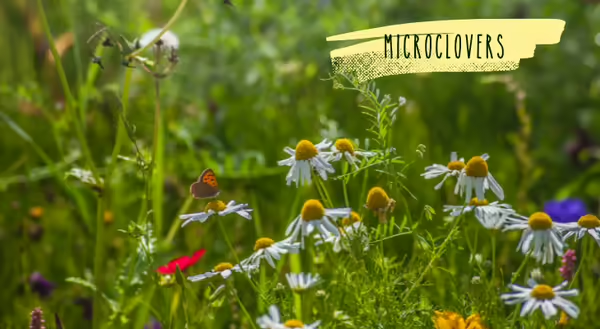
What you need to know
Clovers are making a comeback in lawn seed mixes. Today many families want to attract more pollinators to their yards. They are searching for ecologically sound ways to grow grass, including adding white clover back to the turf seed mix. Clover adds diversity and durability to lawns and provides food for bees. The microclover species is short growing, self-fertilizing, low maintenance and additionally long-living.
White clover, Trifolium repens, was common in lawns before the introduction of broadleaf weed herbicides in the 1950s. Although broadleaves weeds were typically the target of these chemicals, white clover was often damaged or killed..
All clovers are in the legume, or pea, family. Legumes are very useful plants for our environment because they pull nitrogen from the air and convert it into nitrogen in the soil that helps feed plants. Unlike any other plant, legumes create their own fertilizer. Because of these characteristics, there is interest in using microclover in lawns to enhance turfgrass growth and reduce nitrogen fertilizer applications which helps limit fertilizer runoff into waterways.
Tipps and Recommendations
Unfortunately, white clover sometimes forms clumps and competes with desirable turfgrass, resulting in a non-uniform lawn appearance. Microclover (Trifolium repens var. ‘Pirouette’ and ‘Pipolina’) is a selection of white clover with smaller leaves and a slower, less aggressive growth habit.
Preliminary research finds that microclover mixes better with most turfgrass species than common white clover when seeded at appropriate rates. The microclover seed often comes coated with a Rhizobium bacterium – a natural organism that the plant needs to fix nitrogen, sometimes lacking in residential lawn soils.
There are many benefits to adding microclover to a lawn. It mixes well with turf grasses and provides a uniform appearance while its flowers are a food source for bees. Microclover is competitive with weeds, so less herbicide is necessary. And it helps prevent soil compaction which reduces nutrient runoff. Lawn clippings that include microclover are a natural organic nitrogen source, which means you can reduce how many times you apply nitrogen.
But microclover may not be suitable for every lawn. It does not tolerate high heat and drought and does not do well in shady conditions. Microclover may require reseeding for long-term growth in the lawn and its top growth dies back in the winter, which can leave bare spots and lead to erosion. Its seeds are expensive and not readily available in retail stores. Most broadleaf herbicides labeled for use in lawns will kill microclover.
Take action
To establish microclover in a lawn, plan to plant between early spring to late summer. No tilling is required. Mow the grass low before seeding. Set the mower to the lowest setting to reduce competition with existing grass, rake and core aerate the soil. Sow microclover seed by hand or use a broadcast spreader for a more even distribution in larger areas. Water the area every day for the first seven to 10 days because the soil needs to stay moist until the microclover has sprouted. White clover typically blooms in mid-March and grows slower during the summer months.
For more information on lawn care, connect with your local Illinois Extension county office at go.illinois.edu/ExtensionOffice.
MEET THE AUTHOR
Nicole Flowers-Kimmerle is a Agriculture and Natural Resources (Horticulture) Educator for Fulton, Mason, Peoria and Tazewell counties. She completed a bachelors of science degree in crop science at the University of Illinois, and a master’s of science degree in agronomy with an emphasis in weed science at the University of Wisconsin-Madison. She has also worked at Montana State University as a research associate where she worked on weed control in sugar beets and barley. She taught high school chemistry and other science classes where she was able to teach students in both the school garden and greenhouse. She works with both the Extension Master Gardeners and Extension Master Naturalists.
ABOUT THE BLOG
ILRiverHort is a blog that helps people connect to nature and grow.